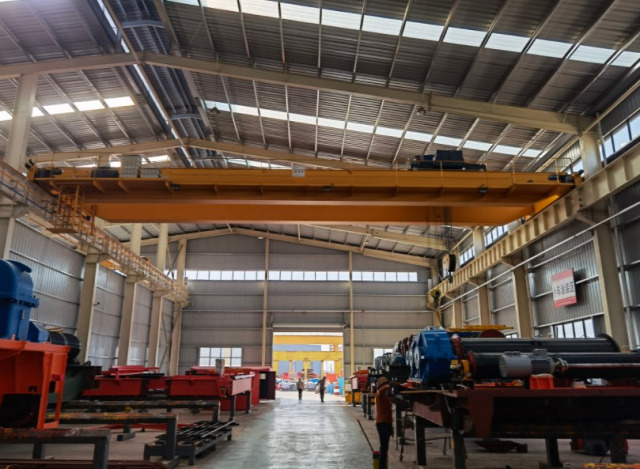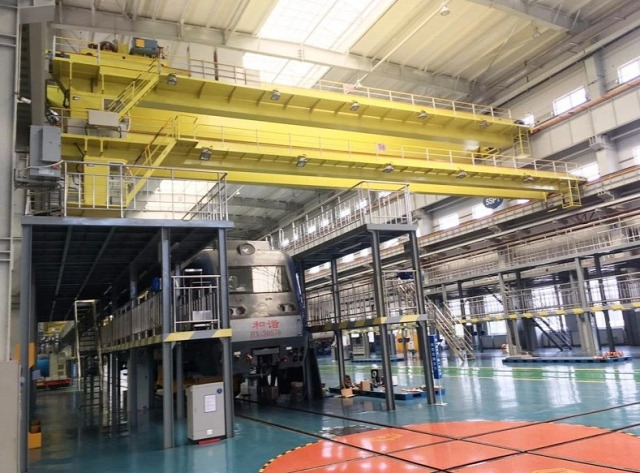Overhead bridge cranes are essential tools for handling heavy loads in a variety of industries, from manufacturing and construction to warehousing and shipping. These cranes help companies improve efficiency, reduce manual labor, and enhance workplace safety by providing a safe and reliable method to move large materials across a facility. Understanding the key features and types of overhead bridge crane for sale, as well as how to choose the right one, is critical for maximizing their benefits.

What is an Overhead Bridge Crane?
An overhead bridge crane is a type of material handling equipment designed to lift and transport heavy objects within a facility. It consists of a horizontal beam, known as the bridge, which moves along a pair of parallel runways. Attached to the bridge is a hoist that travels back and forth, lifting and lowering loads. The bridge itself moves along the runway tracks, providing the crane with the ability to move materials in a rectangular area within the workspace.
There are two primary types of overhead bridge cranes:
-
Single Girder Bridge Crane: A single girder crane uses one horizontal girder across the span to support the hoist. It is typically used for lighter loads and shorter spans, offering cost-effective solutions for various industries.
-
Double Girder Bridge Crane: Aicrane double girder overhead crane features two horizontal girders and is designed for heavier loads and longer spans. It offers greater lifting capacity and can be equipped with additional features such as walkways for maintenance or auxiliary hoists.
Overhead bridge cranes are installed in fixed locations, often attached to the ceiling or support beams of a facility. This gives them the advantage of taking up little to no floor space, allowing workers to use the facility's layout more efficiently.

Key Components of an Overhead Bridge Crane
Understanding the components of an overhead bridge crane helps clarify how they function. Some of the key elements include:
-
Bridge: The horizontal beam that moves along the runways, carrying the hoist and load.
-
Hoist: The lifting mechanism attached to the bridge, responsible for raising and lowering the load. Hoists can be electric, manual, or pneumatic depending on the application.
-
Runways: Tracks or beams that the bridge moves along, mounted either to the ceiling or to support columns.
-
End Trucks: Attached to each end of the bridge, end trucks house the wheels that allow the bridge to move along the runways.
-
Trolley: The trolley moves horizontally along the bridge and carries the hoist.
Applications of Overhead Bridge Cranes
Overhead bridge cranes are commonly used in industries that require lifting, moving, and placing heavy or bulky loads. Some typical applications include:
-
Manufacturing: Used to move raw materials, parts, and finished products within production lines.
-
Warehousing: Ideal for transporting goods across large storage areas.
-
Construction: Used for lifting and moving construction materials such as steel beams or concrete components.
-
Shipbuilding: Assist in handling large ship parts and heavy equipment in dockyards.
-
Steel Mills: Play a crucial role in handling molten metals, steel coils, and other heavy products.
How to Select the Right Overhead Bridge Crane
Choosing the right overhead bridge crane for your business can greatly enhance efficiency, safety, and productivity. However, there are several factors to consider when making your selection.
1. Determine the Required Load Capacity
One of the most critical aspects of choosing an overhead bridge crane is determining the maximum load capacity. Cranes are rated based on the weight they can safely lift. For example, if your facility frequently moves loads weighing 10 tons, you'll need a crane that is rated for at least that capacity. It's important to consider both current and future lifting needs, as underestimating the required capacity can result in safety hazards or equipment damage.
2. Identify the Span and Lifting Height
The span of the crane is the distance between the two runway tracks, while the lifting height is the maximum vertical distance the hoist can raise the load. Selecting the right span ensures that the crane can cover the entire work area. Additionally, the lifting height should be sufficient to move materials without obstructions.
-
Single Girder Cranes: Generally more suited for shorter spans and lower lifting heights, making them ideal for small or medium-sized facilities.
-
Double Girder Cranes: Suitable for long spans and high lifting heights, often used in large industrial buildings with significant load requirements.
3. Consider the Duty Cycle
The duty cycle or work duty of a crane refers to how frequently it will be used and the intensity of its operation. Cranes used for light, infrequent lifts (e.g., in warehouses) can have a lower duty cycle rating, while those in heavy industries like steel mills will need a high duty cycle rating to handle continuous, demanding operations.
Crane manufacturers usually classify cranes according to their duty cycle, ranging from A1 (light duty) to A8 (heavy duty). Matching the duty cycle with the application helps avoid premature wear and tear.
4. Evaluate the Workspace Layout
The layout of your facility will affect the choice of crane. Consider factors like available ceiling height, floor space, and the locations of obstacles such as support columns or machinery. If your facility has limited headroom, a low headroom crane design might be necessary to maximize lifting height.
Additionally, think about the positioning of the runways. Will they be mounted to the ceiling, or do you need to install freestanding support columns? Understanding these spatial constraints is crucial for determining the appropriate crane configuration.
5. Decide on Hoist Type
There are several types of hoists to choose from, depending on the operational environment:
-
Electric Hoists: Ideal for high-efficiency, frequent lifts, electric hoists are the most commonly used type in overhead bridge cranes.
-
Manual Hoists: More suitable for low-frequency, light-duty applications where power sources are limited.
-
Pneumatic Hoists: Used in environments where electricity may pose a hazard, such as in certain chemical or hazardous industries.
6. Consider Control Systems
Overhead bridge cranes can be controlled using various systems, including pendant controls, wireless remote controls, or even fully automated systems. Wireless remote controls are popular for their flexibility and ability to allow operators to control the crane from a safe distance.
7. Plan for Future Expansion
When choosing an overhead bridge crane, consider the potential for future business growth. You might need a crane that can handle increased workloads or be expanded with additional features, such as more lifting speed, automated controls, or upgraded components. Planning for scalability can save costs in the long run.
Conclusion
Selecting the right overhead bridge crane requires careful consideration of your facility’s lifting needs, workspace layout, and operational requirements. From determining load capacity to choosing the right hoist and control system, each factor plays a role in ensuring that the crane meets your current and future demands. By understanding the basics of overhead bridge cranes and evaluating the key selection criteria, you can ensure a more efficient, productive, and safe operation for your business.

